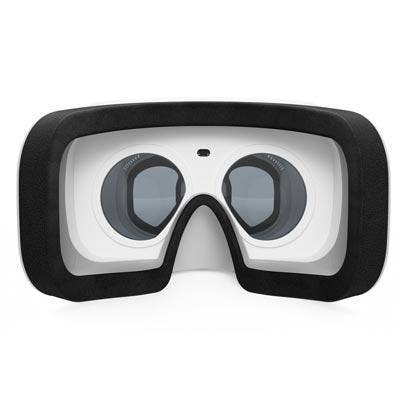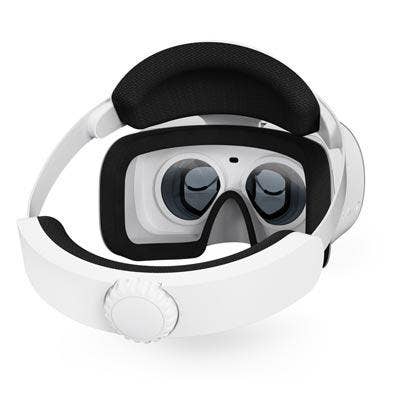5 Things To Know About Lenovo's Mirage Solo VR Headset

Lenovo's VR Bet
While an array of VR headsets have hit the market in recent years, tech giant Lenovo thinks it can do better. At CES 2018 in Las Vegas, the Chinese firm unveiled the Mirage Solo, a VR headset that runs Google's Daydream virtual-reality platform. The launch follows the recent debut of "Star Wars: Jedi Challenges," an augmented-reality game that runs on Lenovo's Mirage AR headset and has won positive reviews.
What follows are five key things to know about Lenovo's Mirage Solo VR headset.

Stand-Alone VR Headset
The biggest differentiator for the Mirage Solo is that it's the first stand-alone headset running Google Daydream. "Stand-alone" means that, unlike other Daydream headsets, the Mirage Solo won't need an Android smartphone to power it. According to Lenovo, that self-sufficiency will reduce the complexity of using VR apps, potentially making the Mirage Solo more appealing to the mainstream than other virtual-reality headsets.

Sensors
Lenovo is further simplifying the VR experience with the Mirage Solo by enabling the headset to work without any external sensors. While other portable VR headsets require extra sensors or cords to track head movements, the Mirage Solo has no such requirement. Lenovo accomplished this by using "inside-out positional tracking" that leverages Google's WorldSense technology, so that the Mirage Solo tracks its position using built-in cameras and sensors. That ultimately makes it possible to move more freely while using the Mirage Solo -- for instance, while playing a VR game that requires ducking or jumping.

Display & Processor
Lenovo is going all out on the specs for the Mirage Solo. For the display, the headset features a 5.5-inch LCD with QHD (2,560 x 1,440) resolution. And for the processor, the Mirage Solo includes the same chip that powers many of the leading Android smartphones on the market -- Qualcomm's Snapdragon 835 -- which is important given that the headset doesn't have a phone to provide the horsepower.

Field Of View
The Mirage Solo aims to provide an immersive experience -- for watching videos, playing games, and using other Google Daydream apps -- with a 110-degree field of view. That means the headset can allow users to see a larger amount of content inside the virtual experience than with many other VR headsets.

Price And Availability
As a result of its technological advancements and inclusion of a powerful processor, Lenovo's Mirage Solo won't come cheap. The VR headset will be priced at "under $400" (a specific price wasn't released). That puts it well above the $99 price of Google's Daydream View headset, and on par with the Oculus Rift ($399) as well. Lenovo says the Mirage Solo VR headset, which comes with a wireless Daydream controller, will be available in the second quarter of 2018.